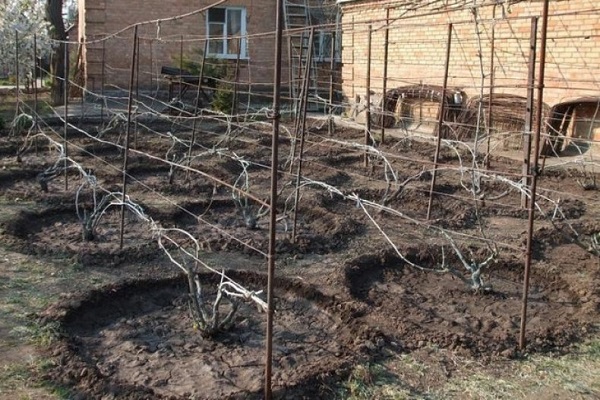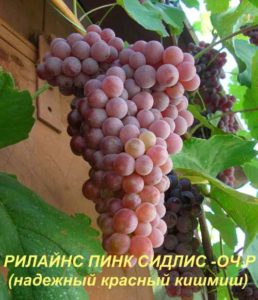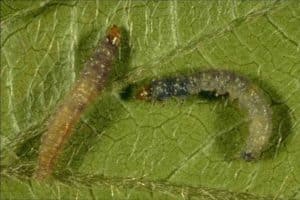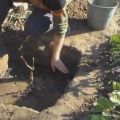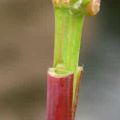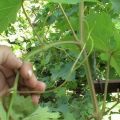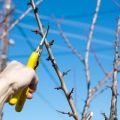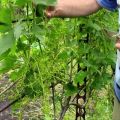How to properly prune grapes in spring, summer and autumn from unnecessary shoots for beginners
Growing a sprawling vineyard and getting a good harvest from it is a challenge, even for an experienced gardener. For vines to grow healthy and large, proper grape pruning and comprehensive care are required. Pruning bushes is one of the key points of care and is necessary for adjusting the height of plants, giving a decorative shape and active fruiting.
Content
Why prune grapes. Pros and cons
Without constant maintenance, the grapes shoot long lashes and cling to various supports, including neighboring trees... Branches reach out to the sun's rays and accumulate nutrients in order to form fruits by autumn for subsequent reproduction. The main benefits of pruning a plant are as follows:

- In a thickened state, the bushes will bear small berries, and pruning contributes to the active growth of large fruits.
- When growing formed plantings, it is more convenient to harvest with improvised means.
- Pruned bushes have the ability to regenerate and give new healthy branches when old ones are removed.
Apart from the obvious advantages, there are several disadvantages of deleting old branches. The main problem is that the wrong timing leads to fragility and breakage of the bushes. Due to improper crown formation, the bush intensively develops shoots, as a result of which the yield is reduced.

Pruning time according to the growing area
The period during which the bushes should be formed by pruning depends on the growing area. In areas with a cold climate and the risk of recurrent frosts, it is required to form bushes 2 times a year - in autumn and winter.
In the middle lane, it is enough to perform the procedure only with the onset of spring. By the swollen places, it will be possible to visually identify living kidneys and remove the dead.
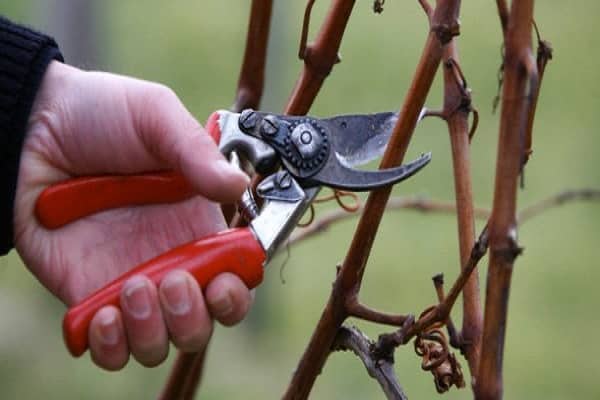
Common schemes
There are several types of grape bush formation. Conventionally, all schemes are divided into 2 categories - covering and non-covering. Covering ones include fan and cordon ones, the group of non-covering ones includes arbor and standard ones used for pruning frost-resistant varieties.
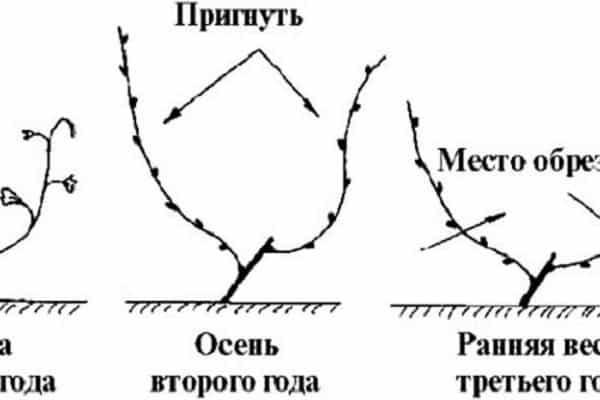
For beginner gardeners, fan pruning is recommended as this is the most convenient method.In the first year of planting life, it is necessary to grow a large shoot and cut it in the fall, leaving 2 eyes from the ground level. Over the next year, the grown annual shoots are pruned into short and long ones. In the spring of the third year, sleeves are created, growing 2 vines on each of them.
In order to avoid mistakes and to avoid back growth of bushes, it is recommended to perform pruning according to schematic drawings.
Among more experienced gardeners, the Kurdyumov pruning method is in demand. The process of leaving during the first two years does not differ from the fan method. Starting from the third year, in the spring they tie up the vine in a horizontal position, expect the growth of annual shoots. After harvesting the autumn harvest, the vine with the spent shoots is cut off, forming a new one.
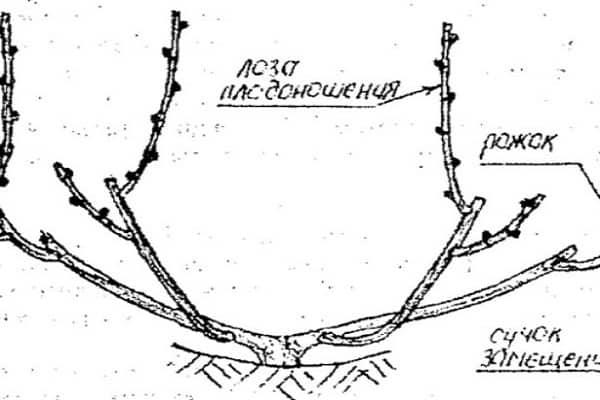
Features of the formation of bushes
When pruning grapes, it is necessary to take into account a number of features. At different periods of plant life, the nuances of crown formation and the location of fruitful vines depend.
In the first year
During the first year after planting grape seedlings requires constant care, since the plant is at a developmental stage. With the onset of spring, 2 lower buds are left on the central stem, and the rest are removed. Young shoots are grown from the remaining buds and fixed in opposite directions.
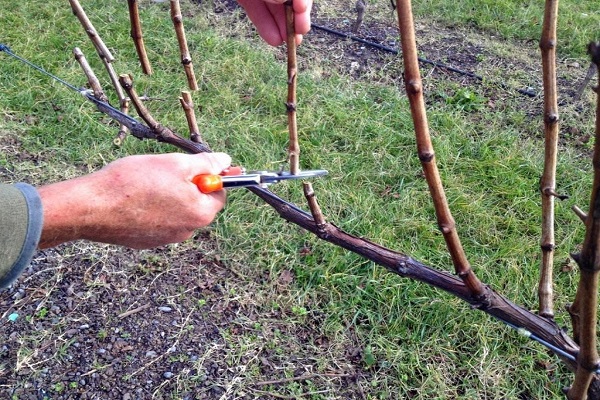
With the onset of autumn, it becomes necessary to trim the shoots. You should wait for the foliage to fall and only then start pruning so that the grapes do not run out of juice. Shoots are recommended to be shortened to different lengths, leaving 2-4 buds. In anticipation of winter, the vine is covered to protect it from frost.
In the second year
When the grape bushes take root and the threat of extreme cold passes, it is necessary to remove the covering material and tie the fruit-bearing vine to the support, pointing the tops in different directions. The stems that have grown from the buds are directed upwards or with a slight slope to the side from the central part of the bush.
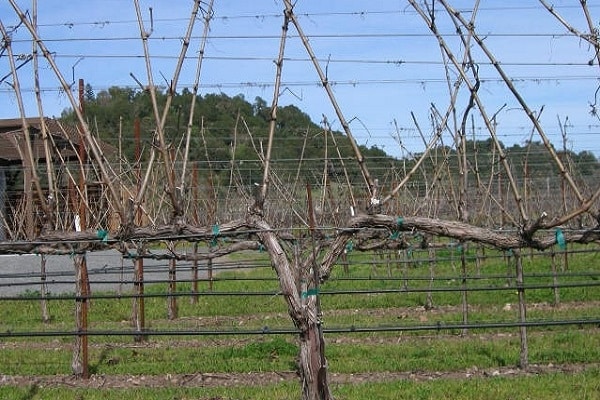
In the fall, the long sleeve on the bushes is shortened, eliminating unnecessary shoots. Then the vertically growing stems, located closer to the center, are cut, leaving the 2 best buds for their further development. For the winter, the vine is removed from the support and covered before the onset of spring warming.
In the third year
In the third and each subsequent year of the growth of the bushes, the care process is carried out according to the same scheme. In the spring, after the risk of cold weather has disappeared, the covering material is removed and the elongated arrows are tied in the horizontal direction, directing the ends in opposite directions.
In the hot period, stems are formed from each bud, which are pruned by 10-15 cm in early August. Due to this, the quality and quantity of the crop is increased. To prevent the formation of an excessive mass of shoots on the vine, it is not recommended to mint before August.
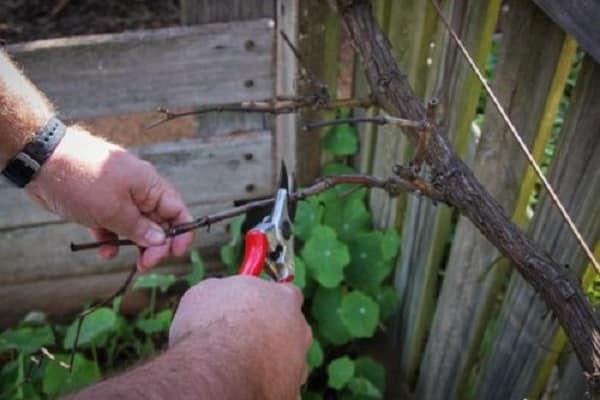
In autumn, it is enough to cut off the sprouted shoots with part of the sleeve, so that on each side there is a link with two shoots. In the future, pruning is carried out in the same way as in the previous year.
Reforming old bushes
To restore fruiting and give old bushes a decorative appearance, you can resort to reshaping. To give shape to young bushes, in which the bulk of the branches are located next to the ground, the fragile vines are removed and half of the sleeves are cut. The rest of the vines will be required for the fall harvest.
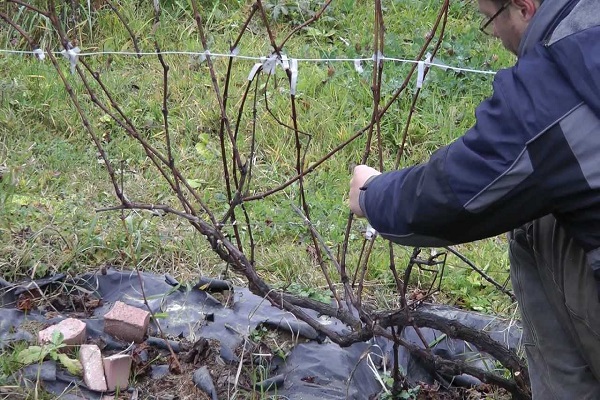
If the branches grow much higher than the soil level, then with the beginning of spring, the bushes are heavily pruned in order to get a crop this year. After harvesting the grapes, the trunk is removed, and new bushes are created from the newly formed shoots.
Pruning grapes and shaping the fruit link in spring
Regardless of the chosen formation scheme, in the spring it is necessary to eliminate frozen, rotten and broken branches.Also, large shoots more than 11 mm thick and too fragile - up to 5 mm in diameter are subject to pruning. Before the onset of the hot season, the shoots should not be very long, so it is enough to leave no more than 15 eyes. As a rule, when forming a fruit link and pruning, 1-2 nodes are left on each shoot.
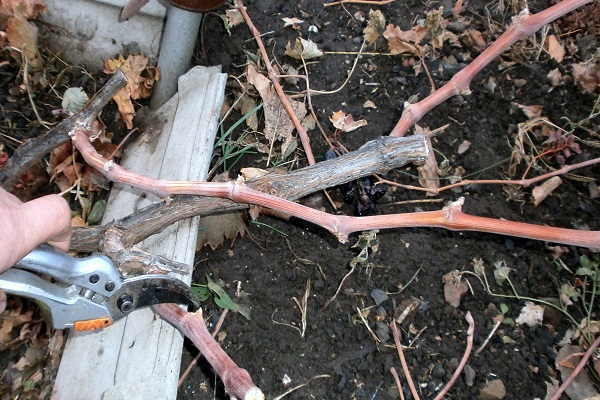
During the spring period, it is necessary to take into account a number of features when caring for grapes. In particular:
- to shorten the vine is always allowed only on one side;
- pruning shears for cutting branches and leaves must be sharpened;
- cut shoots in the direction from the eye;
- in the process of forming, the fruit arrow must be left above the replacement knot.
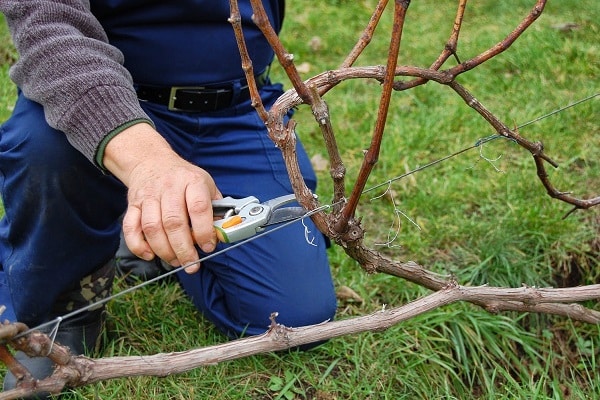
Features and technologies for summer pruning
After the beginning of flowering and spent spring processing of grapes it is necessary to continue caring for the plantings. With the onset of heat in June, fatty shoots begin to grow intensively, which are formed from the old parts of the vine. Provided proper summer pruning, the following results can be achieved:
- A sufficient number of shoots will form on each plant, taking into account the size of the bush.
- The grapes will be protected from disease and attack by harmful insects.
- The ovaries will gain access to ultraviolet rays and free passage of air.
- Nutrients are redirected from parasitic shoots to green brushes.
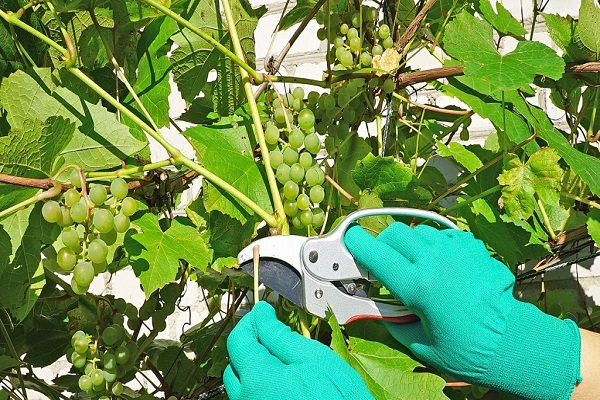
Summer shrub formation should be carried out in early June, when newly grown shoots reach a length of 15-20 cm. In August, shoots are more difficult to remove, which makes it difficult for inexperienced gardeners.
Pinching
Shoots growing on grape bushes need constant care. Pinching to remove them is carried out daily. Since the structure of the vines is similar to vines, antennae serve as fixators. If the bushes are tied to special supports, then the antennae can be completely pinched off.
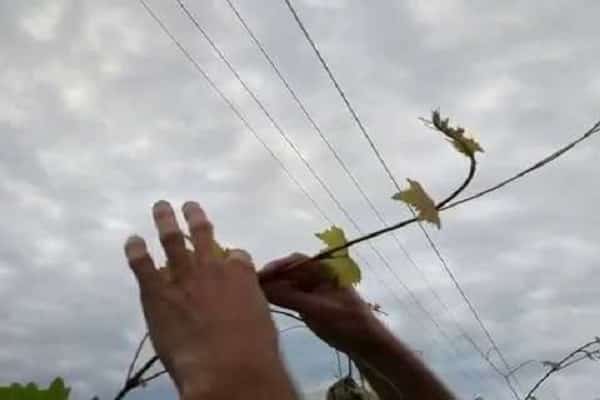
The pinching is done manually before active flowering. It is necessary to tear off the upper elements of young branches so that the remaining parts of the shoot reach a length of about 10 cm. As a result of the pinching, the strength of the plant is restored in future inflorescences. The procedure has a beneficial effect on the number of bunches forming and the quality of the crop.
Removing stepchildren
After waiting for the end of the flowering period, you should begin to remove the stepsons. The elements are small shoots that form at the locations between the leaf and stem of the branch. If you do not remove the shoots, then they will begin to grow intensively, and the bush will become thickened, which will prevent the passage of sunlight to the grapes. In addition, there is a risk of developing infectious diseases, due to which the fruits lose their taste characteristics and become sour.
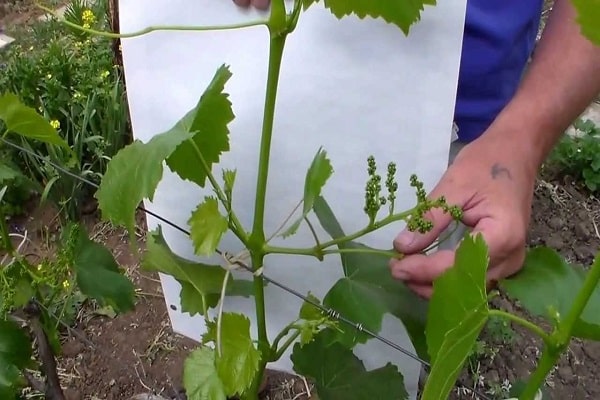
It is not recommended to remove the stepsons to the base, since a new process will form in the same place after a couple of days. Experienced gardeners pinch off part of the appendix, leaving 2 cm. The procedure must be performed weekly.
Lightening
The plant lightening procedure involves pruning aimed at thinning the foliage. At the same time, sufficient air permeability to the grapes is ensured during the period of active ripening of the bunches. It is recommended to immediately destroy the branches cut off during the clarification, since pests can appear in them that can move to plants and start an infection.

Excessively thickened bushes are also subject to thinning, even if brushes have formed on them. The procedure can slightly reduce the amount of ripened grapes, but its quality will increase significantly. During lightening, 3-5 clusters should be left on powerful branches, and only one brush on less strong ones.
Chasing
As a result of embossing bushes, the upper elements of growing shoots with leaves are removed. The purpose of the minting is to suspend development for several weeks and redistribute nutrients between all parts of the vineyard.

Carrying out chasing on each vine, about 15 developed and unaffected leaves are preserved, which can provide the bushes with sufficient nutrients. Short pruning of the vine does not allow for normal saturation of the bunches with food, which provokes a reduction in yield.
Rules for pruning creepers in the fall
During the autumn preparation for the winter of grape vines, it is necessary to perform a two-stage pruning. At the first stage, dried leaves and inflorescences are removed. After that, it remains to wait for the complete fall of the foliage and the transition of nutrients to the main stem. During this period, the thickest shoots are shortened to form a replacement knot during the ripening of the berries.
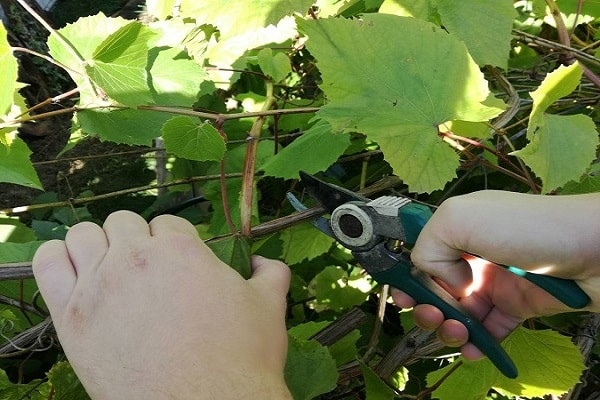
At the second stage of pruning, crowns are formed according to a non-covering scheme. Every second shoot is shortened, 3 buds are left on each of them. If there are other shoots that have grown on the trunk, they are also removed, leaving 5-6 buds each.
Care after the procedure
After pruning the bushes, it is necessary to continue the comprehensive care of them.... The main stages of care are watering and fertilizing. Watering helps the plantings to recover after removing the cover. For soil treatment, it is recommended to mix a solution of 20 g of superphosphate, 3 g of boric acid, 10 g of potassium, 1 g of iodine and 2 g of sulfuric acid. Watering the soil should be uniform and abundant.
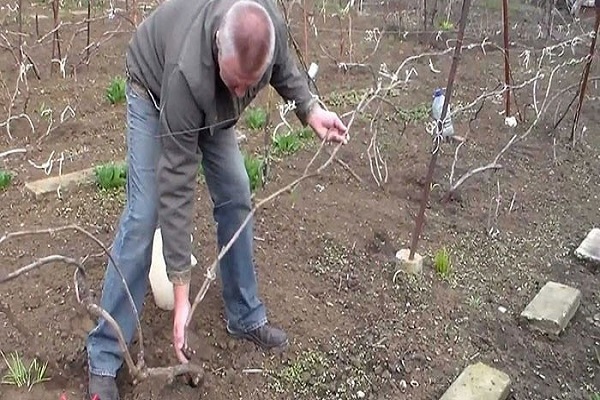
Grape bushes should be fed with fertilizers from the fungicidal and insecticidal categories. Such dressings provide intensive growth and development of green spaces, scare off pests and prevent the occurrence of infectious diseases. Even in the absence of obvious signs of plant damage, top dressing can be used for preventive purposes to ensure the ripening of a good harvest.
